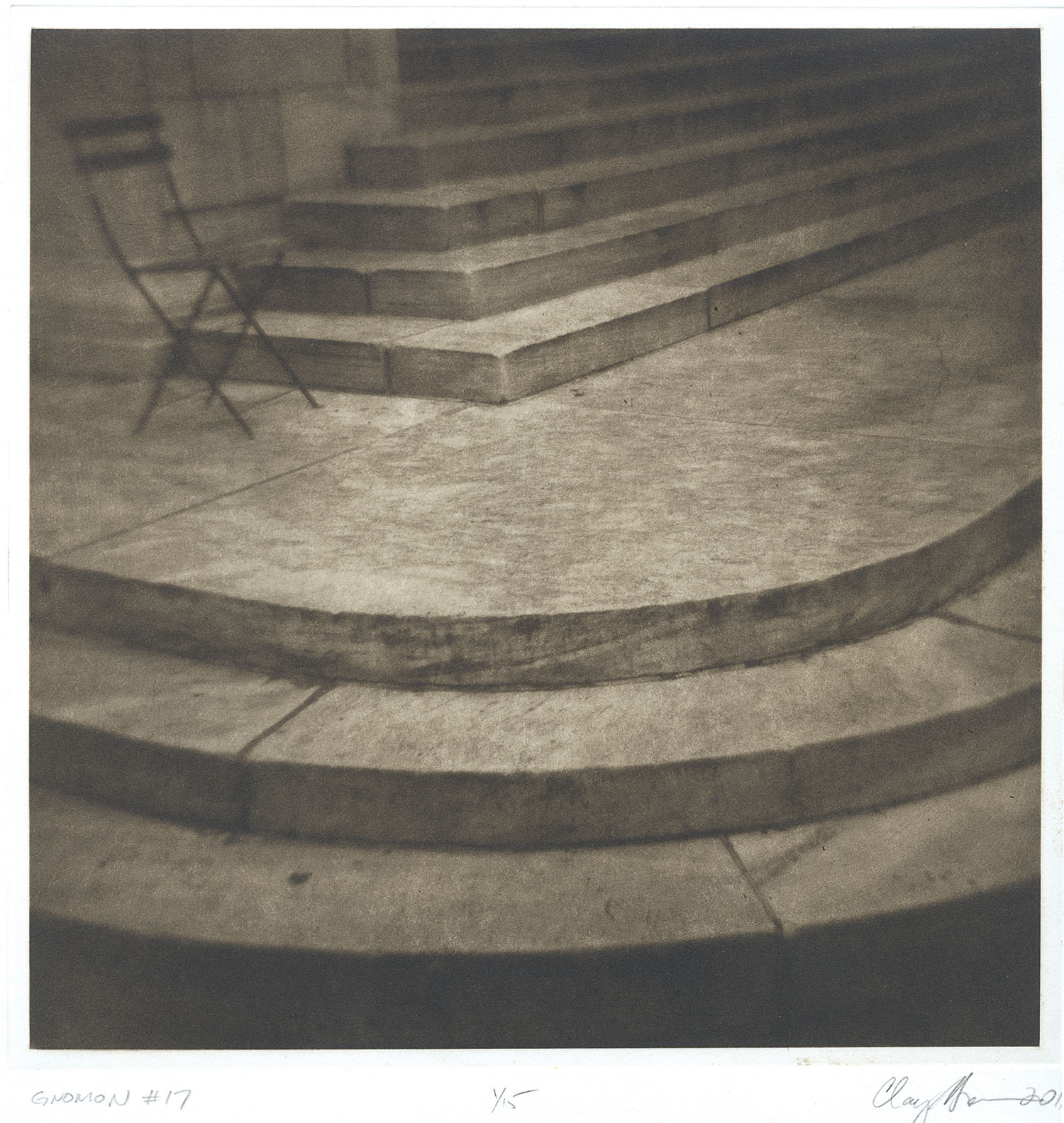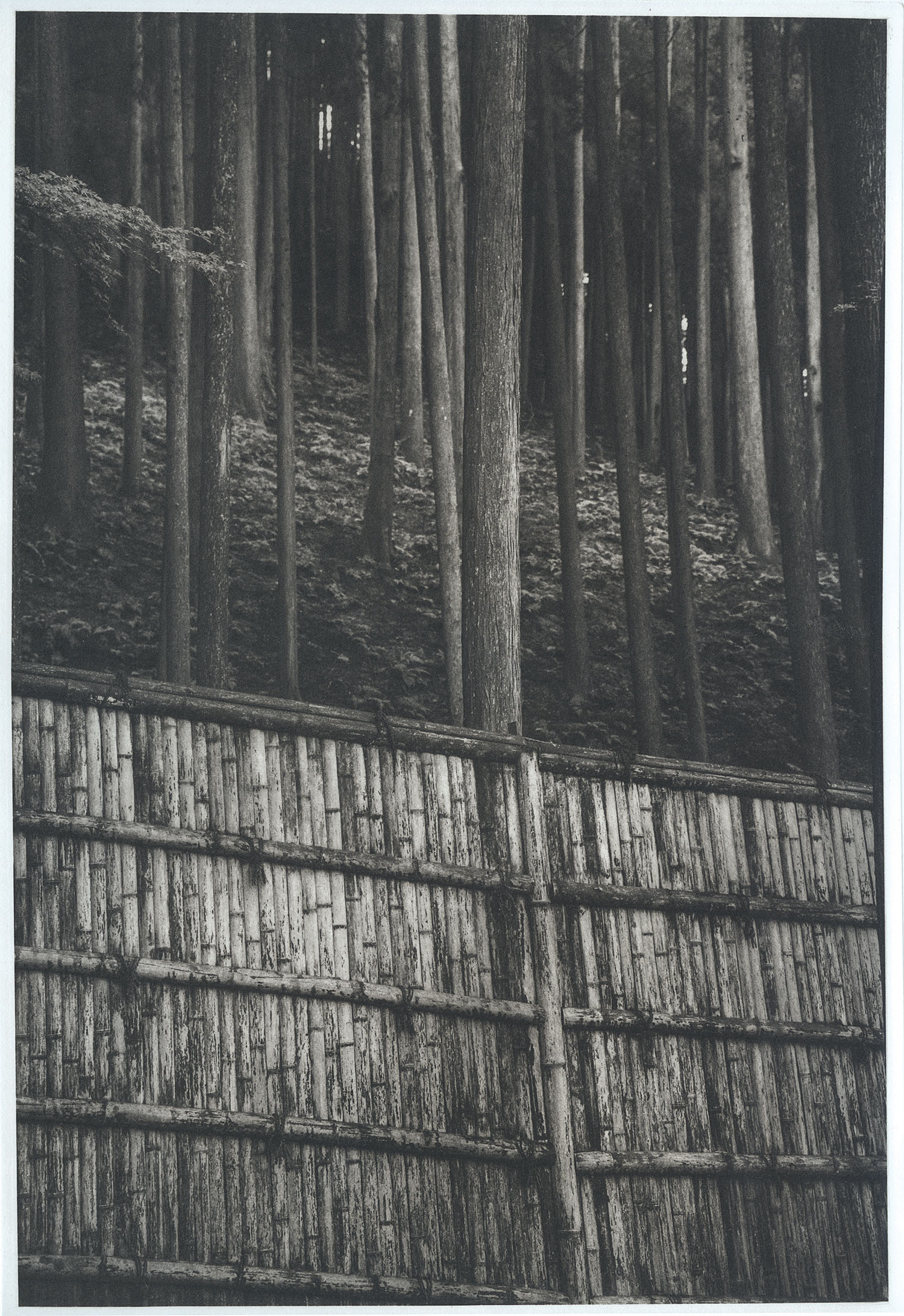
Photography has always been evolved by technology — going from hulking machines to quite literally the palms of our hands. For most, it’s a form constantly moving forward — unless you’re Clay Harmon. A printmaker for more than 25 years and a seasoned photographer for longer, Harmon revolutionizes printmaking by traveling back to its roots.
Viewing his body of work, one might quickly assume he’s a black-and-white photographer. Prints of parking garages, street signs, and shadowy settings take on a film-noir aesthetic but with a catch: they’re all made with ink.

“People look at my [pictures] and say they’re high-quality photographs,” confirms Harmon. “They never imagine it’s made with ink and plates.”
Harmon has mastered a form of printmaking known as polymer photogravure — a method in which a polymer-coated steel plate is used instead of a copper plate. Ultraviolet light selectively hardens the polymer material, and then the entire plate is etched in water, in contrast to the toxic acids or mordants used in traditional intaglio printing techniques. The plate is then used to press ink into a surface to create an image that holds the same photographic scope and quality as a normal digital frame.
The photogravure technique dates to the 19th century, but by using polymer instead of copper or steel, Harmon speeds up the traditional style of printing and makes it safer by removing the need for harsh chemicals to fuse negatives to the metal. “The traditional process was very involved; it could take a whole day to make a single plate,” he explains. “Few people still even try to do this, just because between the chemicals and the [time it takes], it becomes harrowing. I essentially had to figure out by myself how to refine the process — using polymer instead of metal has definitely become a safer and easier way to get the same product.”

Harmon’s slight change in the tradition has certainly done its job. Now teaching classes around the nation and publishing a book within the year, the artist has made photogravure a more accessible art form for photographers and printmakers everywhere.

“It’s so easy now to pull out our phones and take a decent photo without thinking of [how it happens],” says Harmon. “Being able to teach a process that takes those same photos and allows them to be put into a concrete form such as ink really helps people get a better appreciation for both their photography and printmaking itself.”
Harmon’s methods might seem like moving backward in time — but he asserts that by doing so, he can open more possibilities. “It’s all about seeing the world in a different point of view. Giving a photo that we might think is so simple physical properties like putting it into ink — it really shows how much we can mold the technology of today with the techniques of the past.”

Clay Harmon, Asheville. Harmon’s workshop on Polymer Photogravure happens Friday, Oct. 5 through Sunday, Oct. 7, at Asheville BookWorks (428 Haywood Road, West Asheville, 828-255-8444, ashevillebookworks.com). For more information, see clayharmon.com.